Extreme Makeover: Headland Edition
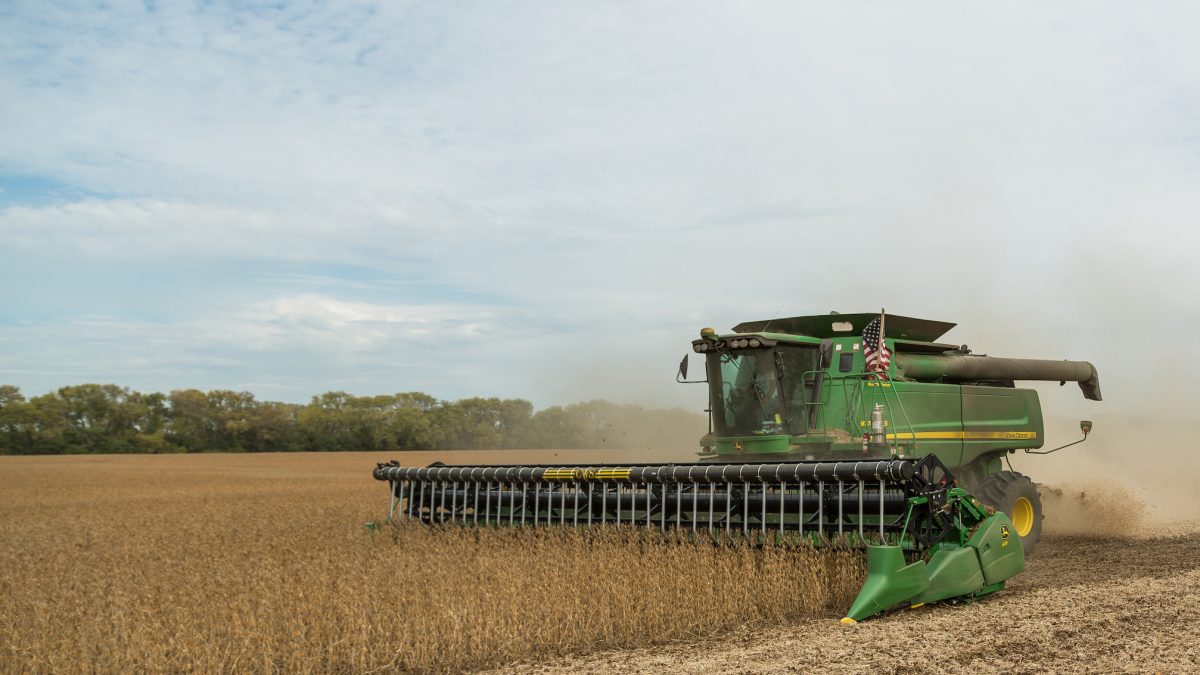
I’m always asking myself, where can we find more bushels in the field. One way to improve the data you collect is to rethink the headland of your field.
The idea is simple: create a new Climate FieldView zone just for your headlands. Headland yields average 10-70 bu/A less than most of the field so they can really skew data the wrong direction.
Why Separate?
- Typically, headlands represent 20% or more of the field
- Quality information
- True representation of how a hybrid does
- Turns the whole field in to a test plot
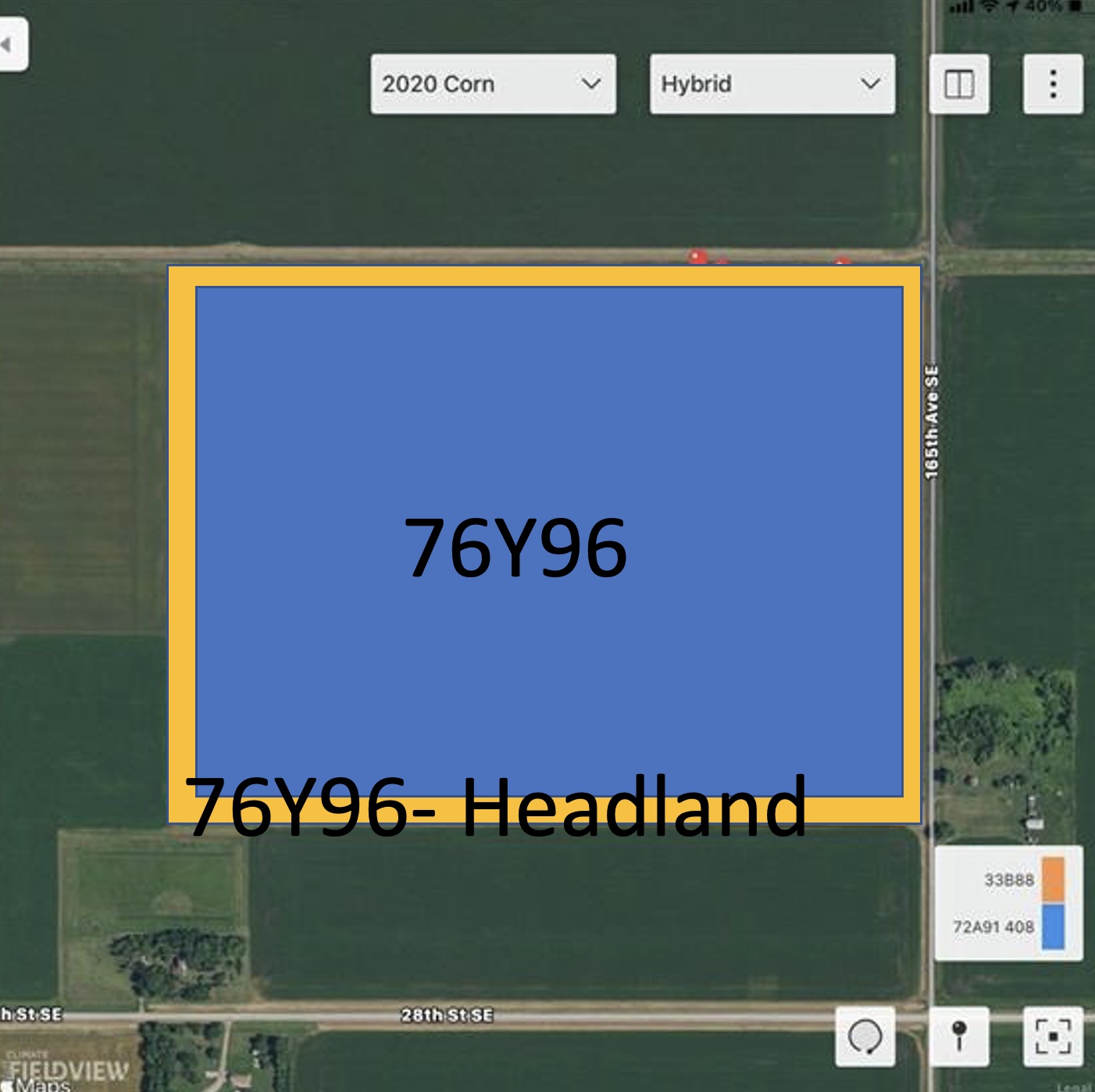
Far too many times I’ve seen growers load up the planter with a new hybrid in the spring and label the whole field that number. Since this is a new number, they only tried a box and when harvest comes the hybrid loses on the farm by 15 bu. But did it really lose?
Headlands Renaming In Action
In the below example, if you were to compare New Hybrid A to New Hybrid B, as a whole, we’re not looking at apples to apples. To do that we’d have to pull out the 30 acres of headlands that Hybrid B was planted on. When that is done, we see more accurate comparisons of true yield potential.
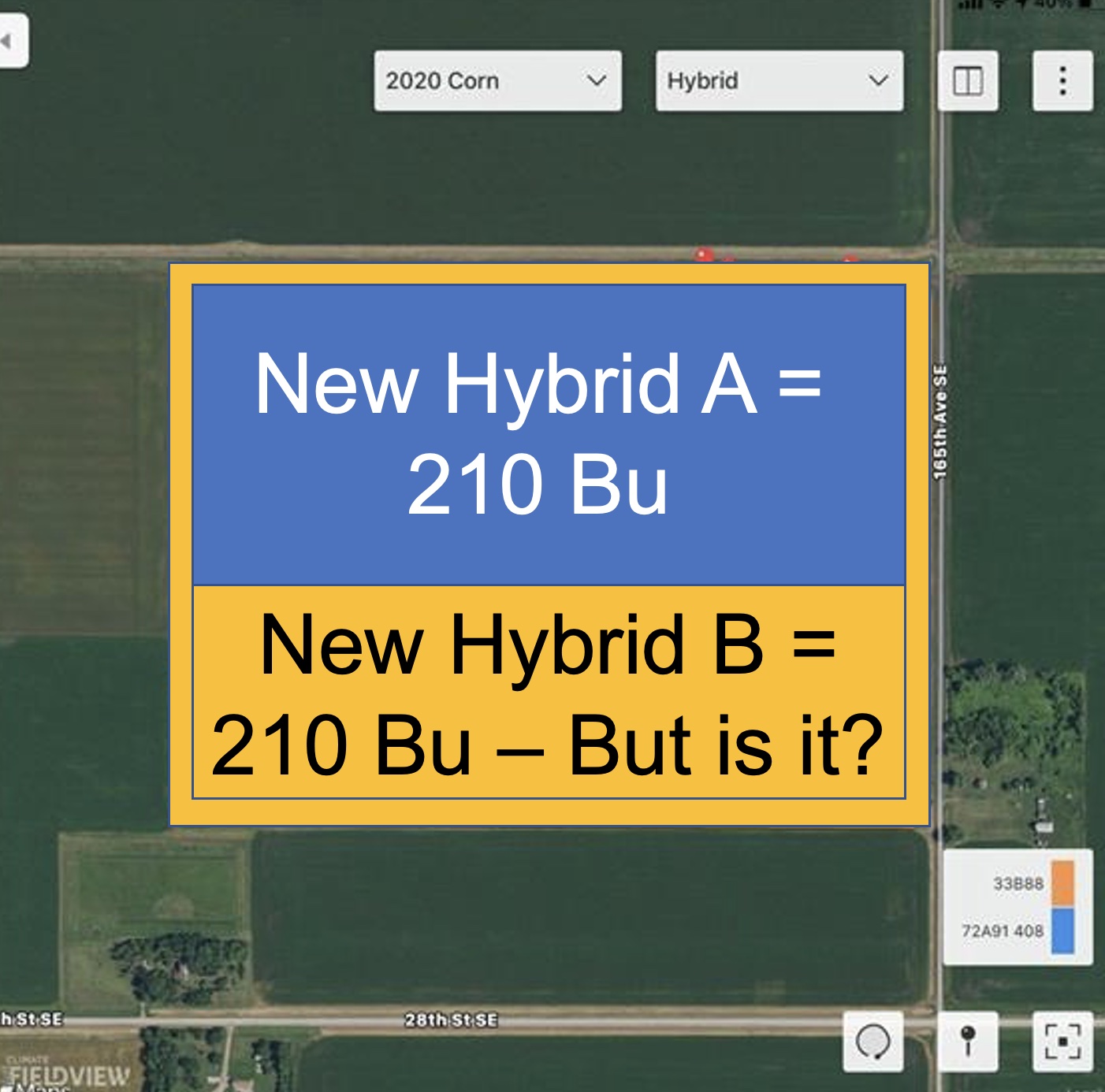

- Both hybrids on 80 acres
- New Hybrid A’s acres include all the headlands
- New Hybrid A actually did 15 bu/A better when comparing apples-to-apples (adjusted to remove headland yields)
Another example is when comparing an old standby hybrid to a new hybrid. If that new hybrid is also planted on the headlands, the cumulative data can be misleading about that hybrid’s potential.
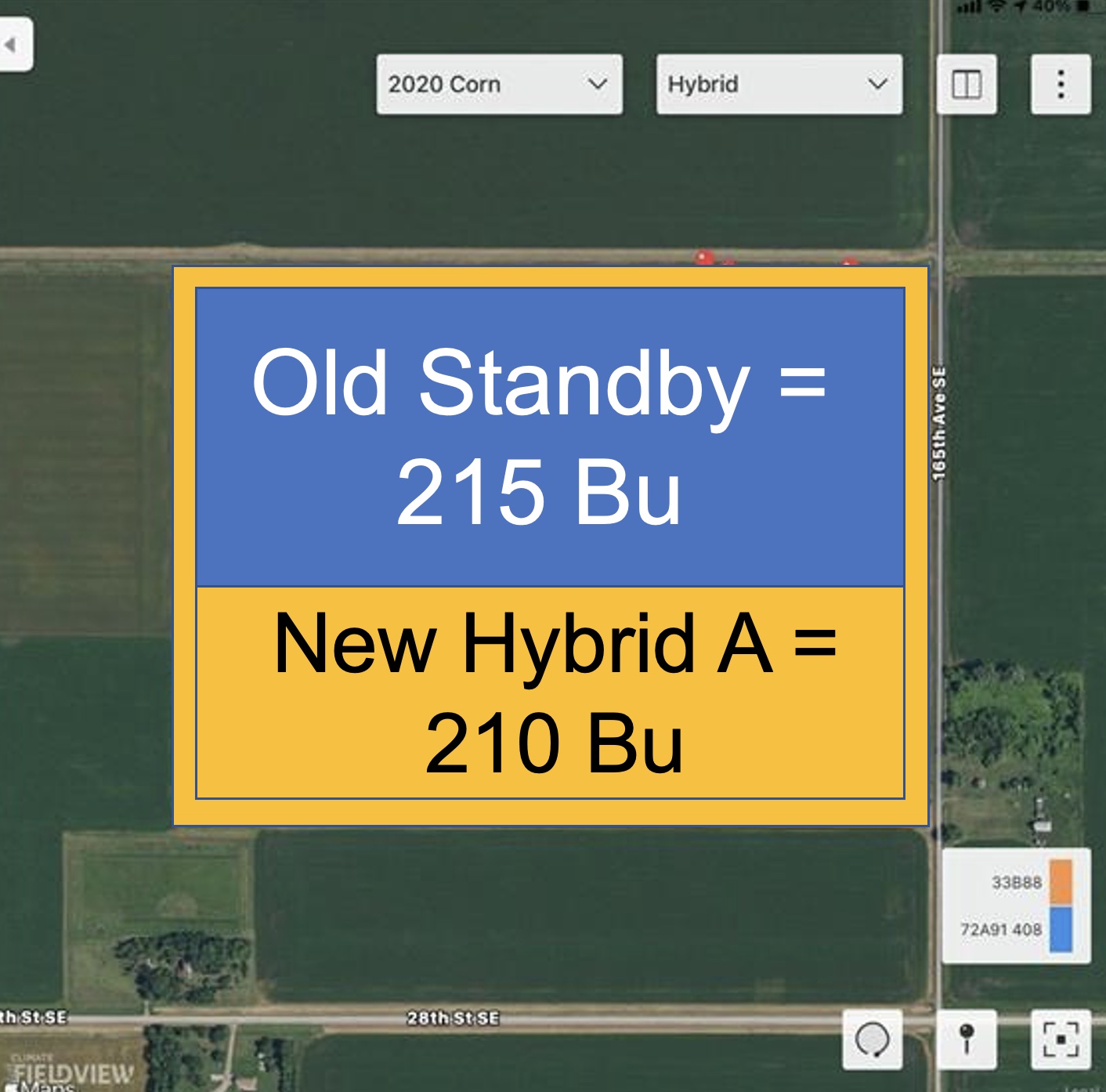

- Both Hybrid on 80 acres.
- New Hybrid A includes all headlands.
- New Hybrid A actually did 10 bu/A better when comparing apples-to-apples (adjusted to remove headland yields).
- Without this analysis, the grower would have decided NOT to plant New Hybrid A next year.
Setting Up For Headland Success
We now have the technology to remove all bad data and only analyze the data we want to look at. But it has to be set up this way when planting. Once planted it is much harder to change information.
My recommendation:
- Enter hybrid name and then headland behind it. That way you can sort your data later and analyze which hybrids did better on the headlands.
- By removing headland data, your field data won’t be skewed.
- If that hybrid is on multiple fields it will give you an accurate reading across the farm on how it performed.
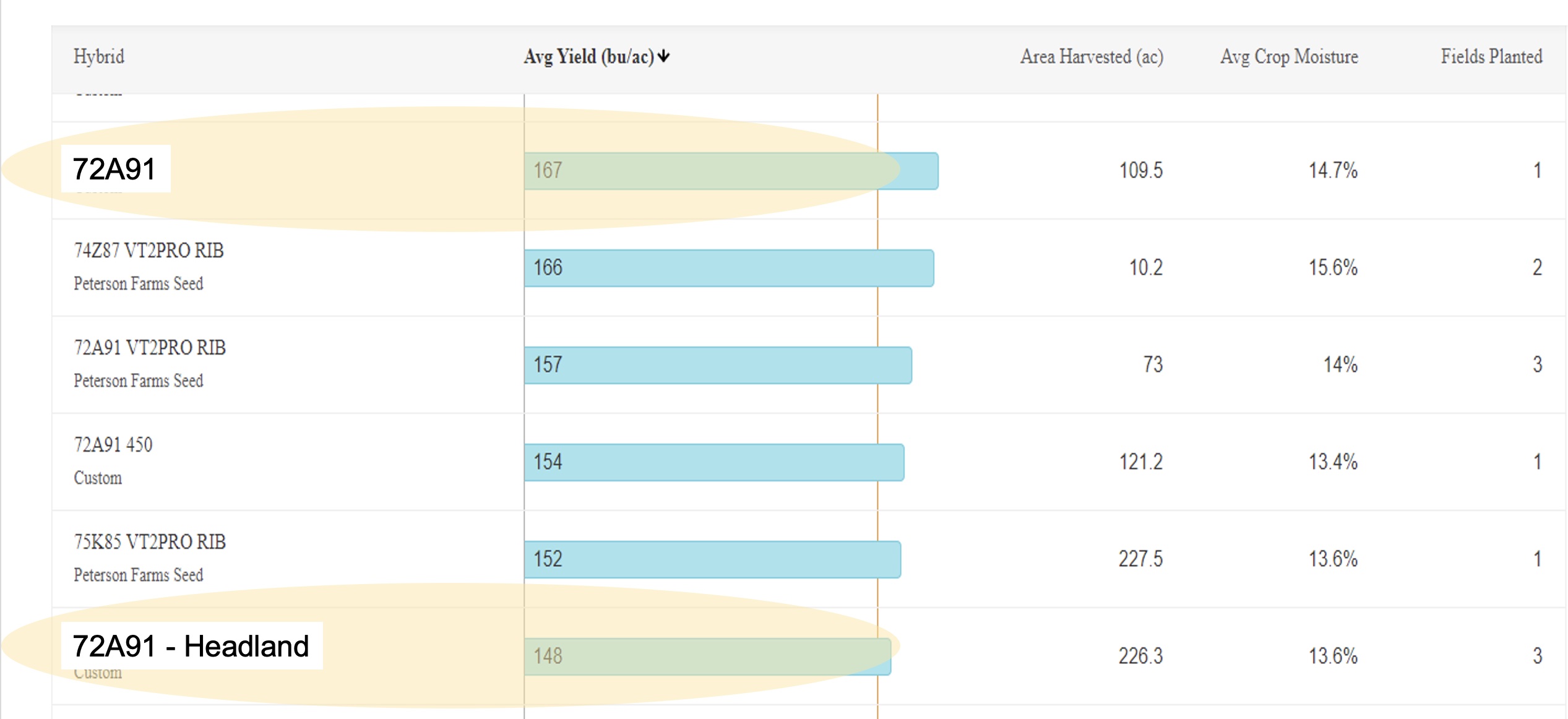
I believe this is one of the simplest ways to turn an entire farm in to a research plot with quality data and limited effort. While it may not be replicated data, it is a step in the right direction to making sure you’re leveraging the full power of the information you’re collecting.
We will be doing this across Carl’s farm this summer and look forward to showing the benefits this fall at Field Day.
Are you doing anything like this on your farm? I’d love to hear about it. Give me a call or shoot me an email! Rick@PetersonFarmsSeed.com











